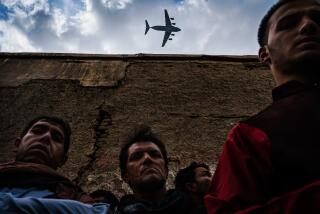Mark Bowden’s searing ‘Hue 1968’ finds miscalculations in the bloodiest battle of the Vietnam War
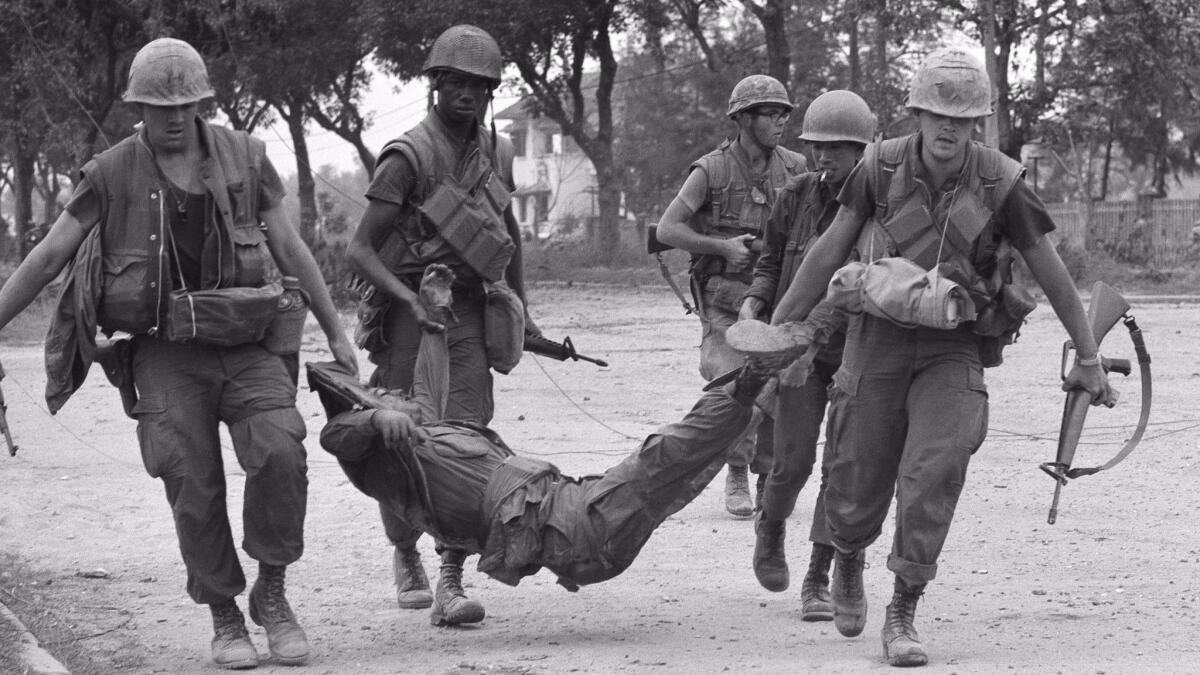
- Share via
Reporting from WASHINGTON — America’s long and divisive war in Vietnam was based on misunderstanding, conducted behind lies, and ended in a humiliating defeat that haunts us still.
To understand why, Mark Bowden’s searing “Hue 1968: A Turning Point of the American War in Vietnam” takes us deep into the bloodiest single battle of that bitter conflict, tracking Americans and Vietnamese as they fought house by house for a city that came to symbolize the folly of the war.
It began on Jan. 31,1968, when tens of thousands of North Vietnamese regulars, Viet Cong guerrillas and local Communist militias suddenly launched more than 100 simultaneous attacks on U.S. military bases and cities across South Vietnam, an audacious assault that caught the Pentagon utterly by surprise.
The Tet Offensive, named for the start of the Lunar New Year, stunned the White House and the American public, who had been assured that nearly half a million U.S. combat troops had the enemy on the run and victory was nigh. After all, more bombs had been dropped on North and South Vietnam by 1968 than were dropped in Europe during all of World War II.
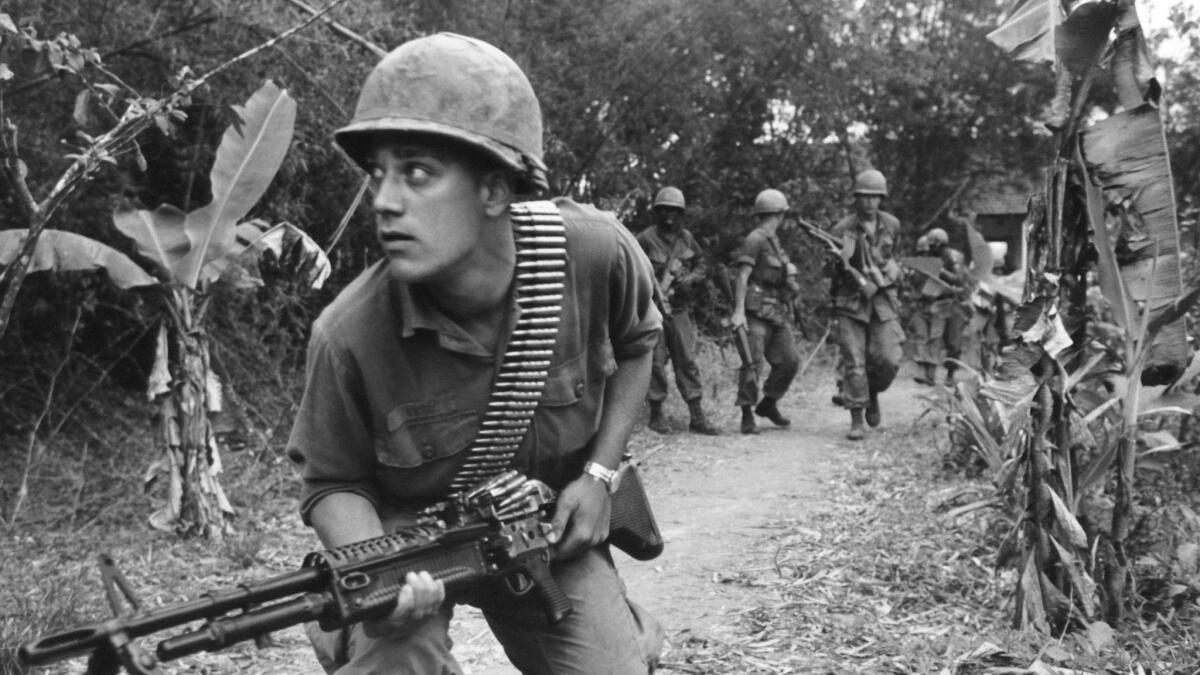
Instead, American TVs showed hardened enemy soldiers shooting their way into the fortress-like U.S. Embassy compound in Saigon, the very symbol of American power and resolve, and fighting for hours with U.S. Marines.
The Tet Offensive failed in its stated objective: sparking a popular uprising that would overthrow the U.S.-backed regime in Saigon and force U.S. troops to leave. Instead, the attackers were beaten back nearly everywhere in the first few hours or days.
Everywhere but Hue, that is.
Thousands of North Vietnamese and Viet Cong had quickly overrun Hue (pronounced Hway), a once elegant city of French colonial buildings and royal palaces along the Perfume River. They dug in, defiantly raised their flag atop the walled Citadel, and tried unsuccessfully to rally civilians to their authoritarian cause.
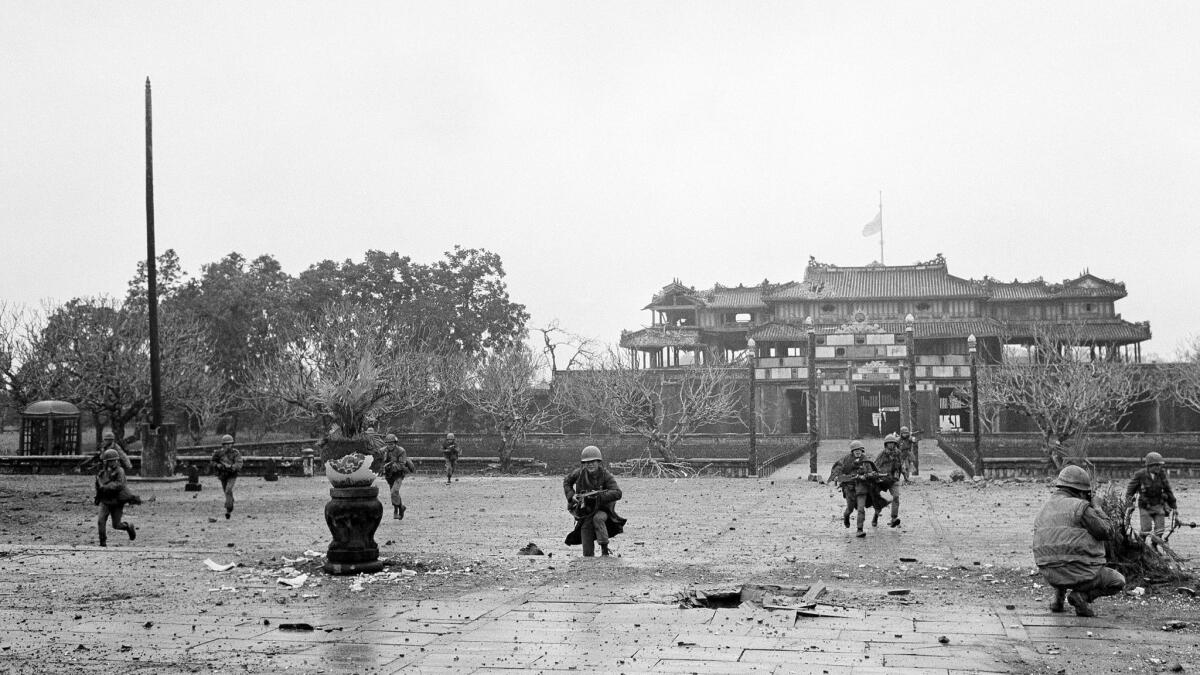
A small U.S. military compound had held on but was cut off. And reinforcements were agonizingly slow to arrive since commanders in Saigon and Washington refused to acknowledge that Hue was firmly in enemy hands even as the body bags piled up.
It took outnumbered Marines and soldiers — as well as Navy warships firing huge guns offshore — 24 harrowing days to recapture Hue, and by then most of the nation’s cultural center was in ruins. Bowden estimates more than 10,000 people died, including 250 U.S. military personnel, in the city.
In that entire period, Gen. William Westmoreland, then the U.S. military commander, inexplicably insisted that the enemy’s real target was a remote U.S. base called Khe Sanh — and that Hue was just a diversion.
Bowden revisits the historic battle with the same character-driven, grunt-level reporting style that made ‘Black Hawk Down’ a bestseller.
Westmoreland viewed Khe Sanh as so critical to U.S. interests that he considered using tactical nuclear weapons to defend it under a plan code-named “Fractured Jaw.” Fortunately, if ironically, Khe Sanh was the only major U.S. base that was not attacked during the Tet Offensive.
Wearing blinders is one thing. Willful duplicity is another. At no point did Westmoreland acknowledge to the White House, the Pentagon or the press that his men were in a ferocious battle to reclaim the country’s third largest city from a disciplined, well-armed and entrenched enemy. The grisly truth emerged only because reporters risked their lives on the front lines.
Bowden revisits the historic battle with the same character-driven, grunt-level reporting style that made “Black Hawk Down” a bestseller. He lends a sympathetic ear to surviving soldiers on both sides, as well as guerrillas and civilians, and gives a vivid account of courage and cowardice, heroism and slaughter.
He brings to life Marines like Lt. Col. Ernie Cheatham, a former NFL lineman from Long Beach. Vietnam was fought in jungles and rice paddies, and neither he nor the Marines under his command were trained or equipped for urban warfare.
So on the eve of battle, Cheatham studied World War II training manuals and taught his men to breach walls with explosives to move house to house, rather than face enemy fire on the street. They learned to collapse a house with a single shot by firing a round directly over the front door.
Bowden doesn’t pull punches about the cruelty on both sides. In one painful interview, a former Marine tells Bowden he is still tormented by the memory of when he and his buddies lined up to have sex with a desperate refugee, paying her with C-rations to feed her family. Only one member of the squad opted out.
The Viet Cong commander in the Citadel was convinced Marines used civilians as human shields. And some Marines did see every civilian as a “Charlie,” an enemy worth killing. In any case, Bowden figures allied shelling and bombing probably killed more civilians than any other cause.
But he also recounts how young Communist zealots systematically rounded up and executed hundreds, perhaps thousands, of Hue’s civil servants, from professors to policemen, during the occupation. The true figure will never be known.
In his spellbinding “Black Hawk Down,” Bowden chronicled the American miscalculations that led to a single deadly clash in Mogadishu in 1993. The battle in Hue lasted weeks and involved devastating U.S. intelligence failures, appalling leadership and furious battles in multiple sites. The lengthy narrative thus is more of a challenge.
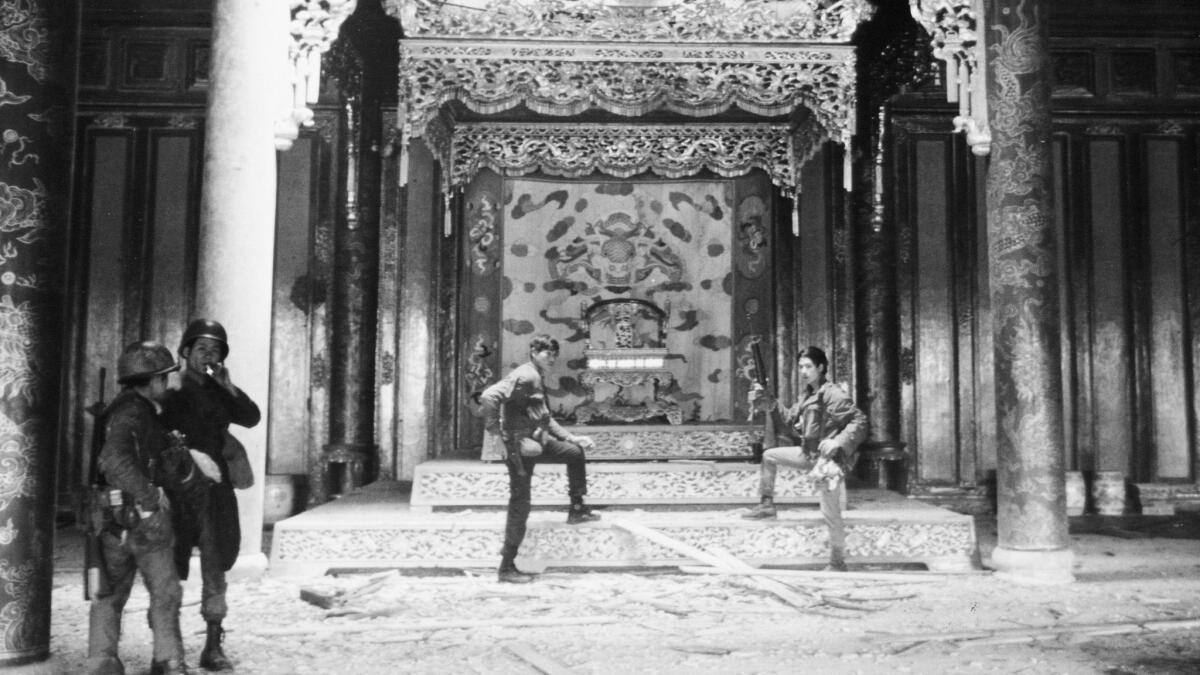
And half a century on, one wishes to hear more from the determined North Vietnamese soldiers who fought as bravely as the Marines. This book leans heavily on American accounts of the fighting.
Bowden concludes that the nightly TV pictures of carnage in Hue marked a pivot point in U.S. history. After it ended, the debate “was never again about how to win but about how to leave. And never again would Americans fully trust their leaders.”
The political fallout was so sharp that President Lyndon B. Johnson announced a month later he would not run for reelection. Westmoreland was relieved soon after. The big attack at Khe Sanh never came and the post was abandoned that summer.
Sadly the tragedy of Hue wasn’t a pivot for the war.
The bloodletting, and the lies, would only intensify under President Nixon. The war would grind on seven more years before North Vietnamese tanks rolled into Saigon. This time the TVs showed Americans crowding onto helicopters at the U.S. Embassy and fleeing for their lives.
“Hue 1968: A Turning Point of the American War in Vietnam”
Mark Bowden
Atlantic Monthly Press: 608 pp., $30
ALSO
MacArthur and Truman face off in H.W. Brands’ new history
‘Spain in Our Hearts’ tells the American story of the Spanish civil war
‘Black Flags: The Rise of ISIS’ offers brilliant biography of Abu Musab Zarqawi
More to Read
Sign up for our Book Club newsletter
Get the latest news, events and more from the Los Angeles Times Book Club, and help us get L.A. reading and talking.
You may occasionally receive promotional content from the Los Angeles Times.

